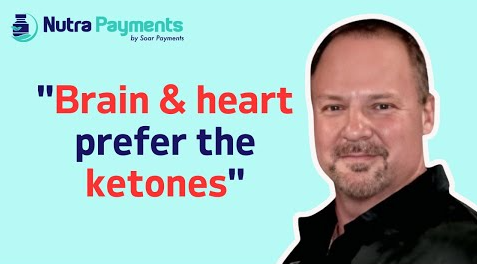The Different Types of Keto
While the keto diet seems quite strict when you initially begin, and it is definitely is strict much like with any other diet, you may be surprised to learn that you do have options. Yes, that is correct—there is more than one way to do keto. If you have not begun the keto diet yet but are looking into it, then you more than likely have some questions regarding exactly what you are in store for. By both mentally and physically preparing for a diet ahead of time, you are effectively setting yourself up for the utmost success. Ultimately, depending on your physical activity levels and you end goals, it might be necessary for you to experiment with a few different variations of this specific diet in order to gain the optimal results.
The standard ketogenic diet is probably the diet you think of when you hear the word keto. This is mainly because it is probably the most practiced of all the versions of the keto diet. This is a very specific diet that is considerably low in carb intake, with a high intake of fat and moderate amounts of protein. If your goal is to shed the weight quickly, you can practice low to moderate amounts of activity while following this diet and see success. It is recommended that you take in 30 or fewer grams of carbs each day in order to stay in ketosis. Ketosis is the metabolic state where your body burns fat for energy instead of glucose. So, what are the other versions of the keto diet?
The Vegetarian Keto Diet
If you are a vegetarian looking to hop on board the keto train then buckle up. There is a keto option for you. Quite commonly, the vegetarian diet is considered to be one of the healthiest diets for mankind. In fact, the vegetarian diet has many benefits from reducing the likelihood of an array of diseases to improving the person’s overall health. Like many other diets, however, the vegetarian diet is not completely ideal for everyone.
In fact, the ketogenic diet has proven to be more effective than the vegetarian diet. So, what is the vegetarian keto diet? To put it simply, a vegetarian keto diet is one that is absent of meat, fish, and poultry that simultaneously reduces carbs as well. The ultimate goal here is to receive all the excellent benefits of the keto diet while reducing animal abuse, our carbon footprint, and improving our overall health. In order to properly follow the vegetarian keto diet, you must take a few steps.
- Limit your daily carb intake to 35 grams or less
- Eliminate animal flesh from your diet (meat, fish, and poultry)
- Receive around 25% of your calories from eggs, dairy, and plant-based proteins (spinach etc.)
- Make sure you are eating plenty of low-carb vegetables
- Receive at least 70% of your calories from fat
- Supplement as needed
- Utilize the keto calculator to determine your calorie and macronutrient needs
The Clean Keto Diet
If you want to lose an optimal amount of weight, many people believe the clean keto diet is the way to go. Many also believe this to be the best way to do the keto diet altogether. To break it down more simply, the clean keto diet is a strict version of the keto diet. Let’s break it down.
THIS is clean keto:
- Avoiding all dairy
- Taking in only whole, real foods
- Opting for grass-fed, organic, free-range, non-GMO food
- Eliminating alcohol from your life
- Avoiding nuts or simply eating them in little amounts
- Not eating processed foods
- Avoiding artificial ingredients
- Ridding your life of sweeteners
In the end, the clean keto diet serves to guide the dieter toward real foods which are ultimately the entire point of the keto diet. In fact, this is ultimately the original way of practicing the keto diet. For anyone suffering from PCOS, insulin resistance, diabetes, or epilepsy, this diet is incredibly therapeutic. With the clean keto diet, it is recommended that you take in 20-30 grams of carbs each day. It is also a good idea to keep a food diary—tracking what you eat from day to day.
The Dirty Keto Diet
Dirty keto is the newest version of the ketogenic diet. While it has its differences, in the end, it follows the exact macronutrient-breakdown that the regular keto diet does. However, there is one main difference—you can get your macronutrients from practically anywhere. What you are not getting on the dirty keto diet is your micronutrients that are vital to your well-being. These include vitamins, enzymes, and important minerals. Therefore, supplementation is KEY.
While you can still lose weight on the dirty keto, you will likely suffer from inflammation, cravings, bloating, and less of a chance of retaining your weight-loss once you part ways with the diet. While the dirty keto diet works ok, it is still better to eat homecooked, clean, whole foods. It is important to remember that the regular keto diet does not have to be 100% made up of salads and steaks. In fact, you can still indulge in keto bread, keto pancakes, and fat bombs.
The Vegan Keto Diet
For some people, things like climate change, animal cruelty, and their health are all tied into one. That is why there are so many vegans and vegetarians out there. This is one of the most restrictive diets out there, but believe it or not, it is quite possible with some knowledge and a whole lot of dedication. In order to properly practice a vegan keto diet, here are some tips.
- Limit your carb intake to 35 grams or less on a day to day basis
- Rid yourself of all fish, meat, and any other product attained from animals
- Supplement your diet with the nutrients you are not getting enough of such as D3, B6, B12, DHA, EPA, zinc, iron, and taurine
- Get a minimum of 70% of your calories from plant-based fats
- Consume plenty of low-carb vegetables
- Get around 25% of your daily calorie intake from plant-based proteins
When you follow the vegan keto diet, there are certain foods you should be eating. For instance, leafy greens, fermented foods, mushrooms, vegan “meats”, avocado, berries, nuts and seeds, sea vegetables, and all-natural low-carb sweeteners. Most of what you will find yourself doing on the vegan keto diet is replacing things like milk with coconut milk and heavy cream with coconut cream. These are just a few examples. You will also need to substitute things such as eggs as these are a huge part of many keto recipes. Luckily, things like flax seed and silken tofu work great as egg alternatives. As you can see, the vegan keto diet is not impossible—just challenging. You have to be ready to work for what you really want. At the end that part is the same for each version of the keto diet.

 ACCOUNT
ACCOUNT
 CART
CART





